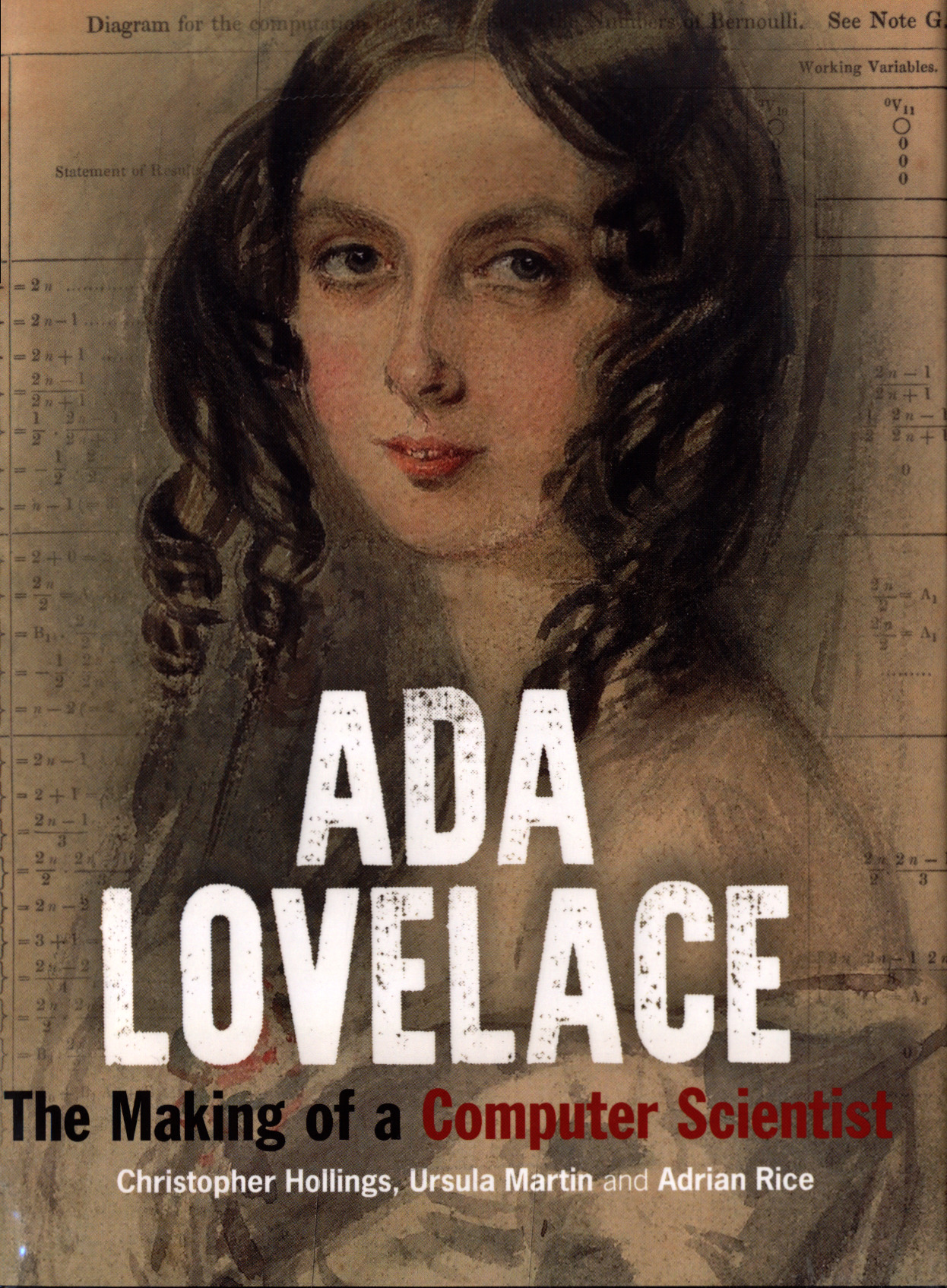
Ada Lovelace:
The Making of a Computer Scientist
by Christopher Hollings, Ursula Martin, and Adrian Rice
QA29.L72 H65 2018
New Arrivals Island, 2nd floor
Augusta Ada King, Countess of Lovelace (1815-1852), daughter of Lord Byron and his wife Anne Isabella, was tutored at home instead of receiving a formal education at institutions that were mostly closed to women. Demonstrating her intelligence at a young age, her mother made sure she was taught a wide variety of subjects to feed her brain. She grew to become a gifted mathematician and one of London’s social and scientific elite in the Victorian era. Lovelace has been called the first computer programmer. But how was that possible in an age when there weren’t any computers? There was the idea of computers, that’s how. Not counting devices such as the abacus and slide rule, the first modern computer was the “Analytical Engine.” Although never built, it was created by British mathematician Charles Babbage between 1833 and 1871. Lovelace worked with him. She published her first computer program, essentially a table with mathematical entries, in 1843. This book includes that table along with many other illustrations of formulas, diagrams, paintings, drawings, and correspondence. Each of the many illustrations appear carefully chosen to elucidate Lovelace’s development from childhood onward and help us understand the mystery that is Lovelace. This book is a quick read, filled with many illustrations to delight as well as unique information gleaned from previously unpublished archival materials used by the authors. It is a delight to read.
If you’re interested in a another blog post about Lovelace, but about a picture book, please look here: Ada Lovelace, Poet of Science: The First Computer Programmer.
The Andersen Library has a few more adult Ada Lovelace titles if you’d like to read more:
- Ada’s Legacy by Robin Hammerman and Andrew L. Russell
- Ada: A Life and a Legacy by Dorothy Stein
You can also borrow books from other UW System libraries through Research@UWW by using UW Request.
